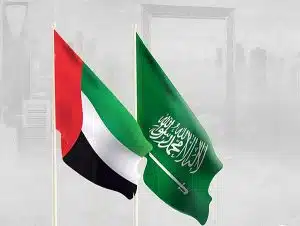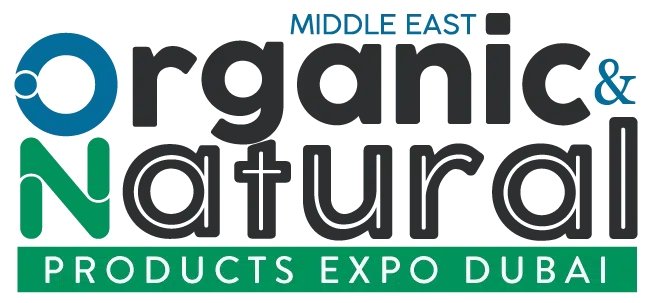23th May, 2025
 I’m Amit Solanki, and I’ve been with GMG’s Health and Beauty division for almost two years now. I’ve worked across both beauty and wellness, but currently, I focus more on fitness and nutrition within the wellness space at Supercare. That said, beauty has always been my core strength. I’ve been in the beauty industry for close to 12 years now, and that experience really helps shape the work I do here.
I’m Amit Solanki, and I’ve been with GMG’s Health and Beauty division for almost two years now. I’ve worked across both beauty and wellness, but currently, I focus more on fitness and nutrition within the wellness space at Supercare. That said, beauty has always been my core strength. I’ve been in the beauty industry for close to 12 years now, and that experience really helps shape the work I do here.

Brand Manager – International Brands , GMG
Natural and organic beauty products seem to be gaining a lot of traction lately. What trends are you seeing in that area?
Great question! it’s one of the most exciting shifts happening in the beauty space right now. What’s really interesting is how trends keep evolving with each generation. Right now, we’re seeing Gen Alpha coming up, but just a few years ago, it was all about Gen Z, and before that, the Millennials.
Millennials were probably the first to really start pushing for clean, organic, and natural products. It was more of a conscious choice. Then Gen Z took that a step further they started doing the research and really understanding what’s in their products. Now, they’re the ones actually driving that change in the market.
The result? A huge opportunity for brands. Whether it’s makeup, skincare, or even bath and body, people are looking for products that are clean, safe, and conscious not just environmentally, but health-wise too. Ingredients that are paraben-free, natural, and organic are no longer nice-to-have; they’re expected.
And honestly, this change was long overdue. Earlier generations didn’t really think this way, but today’s consumers are much more careful about what they’re putting on their skin and what long-term effects those ingredients might have.
I actually did a study about two years ago, and back then, only around 6 – 7% of the products in the market were clean and conscious. Today, it’s around 11 – 12%. So it’s growing, but there’s still a long way to go. We haven’t even hit the halfway mark.
Looking ahead, I wouldn’t be surprised if, by 2030, almost all beauty products in the market are clean and conscious. If people are becoming so particular about things like recycling and going plastic-free, it’s only a matter of time before the beauty industry catches up completely. Plus, with initiatives like the UAE’s push for paperless systems, that kind of shift is going to happen even faster.
What kind of challenges do you face in this space, especially with so many mainstream beauty brands already in the market?

As the UAE government moves toward a more sustainable and future-forward mindset, the rules are going to keep evolving. That’s actually a good thing, but it does mean brands need to stay alert and flexible.
From our side, it’s all about making sure that any products we bring in are compliant with the latest standards. That way, we can avoid surprises. Thankfully, in the beauty space, the regulatory process is a bit more manageable compared to categories like food or supplements, which are far more complicated.
So, as long as brands are proactive and willing to adapt, there really aren’t too many obstacles. It’s just about being prepared and staying informed.
When it comes to food and other categories, the regulations can be quite tedious and time-consuming. Fitness nutrition and certain herbal products, in particular, are subject to strict regulations that can be surprisingly complex and expensive. However, the beauty category is relatively easier to manage in comparison.
Are there any specific certifications required for beauty products in the UAE?
Yes, the Dubai Municipality provides specific certifications for beauty products. Businesses must apply for these, which typically cost between 10 to 15 dirhams per application. Once submitted, the application undergoes a review process that takes about a month. Upon approval, a certificate such as the CPRE certificate is issued.
The process is managed through a government portal called Montaji. Each company receives access to this portal where they can register and upload their product details. It’s not just a listing; companies must submit five to six key documents per product for approval. The review usually takes 3 – 4 weeks, and if required, lab testing is conducted. Once the product passes all checks, it receives final approval.
Where do you typically source your beauty products and ingredients?

What advice would you give to new companies entering the UAE beauty market?
To be honest, launching a brand in the UAE requires more than just entering the market – it’s about creating an impact. The UAE has a small population of around 11 – 12 million, but the number of beauty brands is overwhelming. Walk into any retail store and you’ll see over a hundred options. Simply adding a new brand won’t increase overall sales; in fact, it might cannibalize existing ones.
For example, in a departmental store, skincare might only contribute 15% of the total beauty category revenue. If that segment already has 25 brands, adding more will not necessarily grow the category it may reduce the performance of existing brands.
So, new companies must focus on building impactful, clean, and conscious brands. Strategic marketing is essential. Without it, you risk being part of a create and destroy cycle getting into a retailer one day and being phased out the next. It’s important to market consistently not just once, but across quarters and years. You also need to adapt your marketing to generational changes to stay relevant.
There are certainly opportunities in the UAE and wider GCC market, but competition is fierce. The key is to be strategic in your assortment, marketing approach, and brand positioning.
Is it true that entering the UAE market acts as a gateway to the Saudi market and the rest of the GCC?

Entering the UAE can serve as a strategic gateway to the rest of the GCC. Thanks to the geographic proximity Saudi Arabia is just 500 km away, Oman around 400 km, and Bahrain about 900 km a strong presence in the UAE, coupled with effective marketing, can easily open doors to neighboring markets. So yes, UAE is indeed a gateway for brands looking to expand into the GCC.
Any final thoughts or closing remarks?
Beauty is a fascinating and rapidly growing category in the UAE and the GCC. The market has a strong appetite for innovative, high-quality products. If you have the right brand and the right strategy, success is very achievable. Focus on consistency, adaptability, and impactful marketing, and you’ll find strong growth potential in this region.
